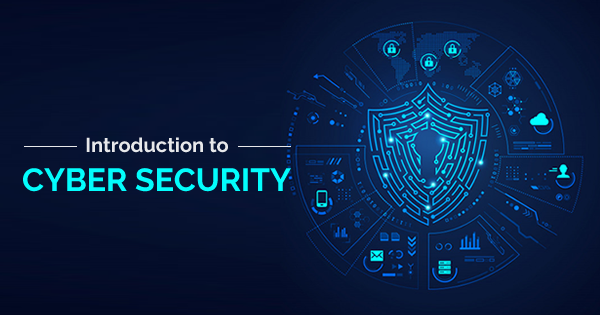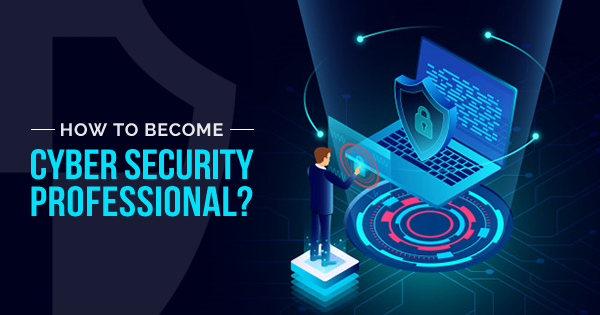Are you searching for a reliable introduction to cybersecurity? One of the notable terms that you may hear constantly in the field of IT is cybersecurity. The origins of the internet and the transformation of enterprises to the digital landscape have created considerable opportunities. Now, it is easier for businesses to carry out traditionally complex tasks easily.
For example, you can send an important notice to all team members in an organization with a simple email now. Therefore, you can save a lot of effort in preparation for paper-based notices and delivering them in person to each team member in your workplace. While technology has made it easier for us to carry out traditional tasks with ease, it has also led to consider issues regarding the security of information.
Try Now: Certified Ethical Hacker Free Test
Attackers with malicious intentions can compromise the sensitive business information of an enterprise or restrict access to the systems. Therefore, it is very crucial to reflect on the importance of cybersecurity while investing considerable efforts in determining your security requirements.
The following discussion would highlight the definition of cybersecurity alongside outlining answers to ‘why is cybersecurity important’. In addition, readers can also find detailed insights into the notable threats in cybersecurity. Subsequently, you can also identify the different types of cybersecurity solutions that you can adopt for resolving different threats.
By the end of the discussion, you would also find the prominent best practices for cybersecurity. On an overall basis, you would learn not only about cybersecurity but also its necessity in the long term as a vital component in the digital world.
What is CyberSecurity?
The most important aspect of an introduction to cybersecurity should be its definition. Over the years, many professionals and academics alike have tried to present diverse definitions of cybersecurity. Primarily, the differences in the definitions of cybersecurity arise from the different problems that each author tried to solve with cybersecurity. Therefore, it is essential to have a one-size-fits-all answer to ‘what is cybersecurity’ before you dive deeper.
Basically, cybersecurity is the continuous practice of safeguarding systems, programs and networks from digital attacks. The cyberattacks can be the outcomes of variable intentions. For example, some cyber attack may aim at compromising sensitive information, interrupt general business processes and extort money from users. Cybersecurity helps in safeguarding computing systems from unwanted downtime.
However, the threats are increasing every day with the number of increasing devices present considerable challenges for cybersecurity. So, it is highly essential to reflect on the various types of threats to cybersecurity for strengthening your safeguards. However, prior to an outline of the threats to cybersecurity in this discussion, let us reflect on the scale of cyber threats in this introduction to cybersecurity.
Enroll Now: SSL/TLS Training Course
The Scale of Cyber Security Threats
There is no doubt that the global cyber threat is increasing with every passing day. If you are staying updated with the tech world, then there’s no way you could have missed news of cyberattacks on tech giants and in many other industries. For example, the healthcare industry, which is gradually adopting digital technology for streamlining the delivery of health services, is a highly vulnerable target for cyberattacks.
Compromises in healthcare records can lead to an interruption in the delivery of appropriate healthcare, thereby presenting a clear impression of the dire threats of cyberattacks. Now, let us take a look at some statistics pertaining to the state of global security threat in our introduction to cybersecurity. According to a report by RiskBased Security, almost 7.9 billion records were exposed to data breaches in only the first nine months of 2019.
Shockingly, the figure showed a 112% growth, i.e. more than double of the records exposed in 2018. Public agencies, medical services, and retailers were the most affected. The vulnerability of these sectors is high due to the collection of financial and medical data. Furthermore, every business that uses networks places its customer data at risk of cyberattacks. In addition, cyber-attacks could also aim at customer attacks or corporate espionage.
The International Data Corporation also predicts a considerable rise in the number of cyberattacks in the coming years. According to the IDC, the worldwide expenditures on cybersecurity solutions would cross almost $133.7 billion by 2022. Therefore, governments all over the world are responding to the rising levels of cyber threat, thorough introduction to cybersecurity.
Governments want effective guidance on best practices for supporting organizations in implementing cybersecurity. For example, the National Institute of Standards and Technology (NIST) in the US have developed a cybersecurity framework. The primary objective of the framework is to provide recommendations for continuous and real-time monitoring of all digital resources for fighting against the creation of malicious code and support early detection of threats.
Also Read: How to Become a Cybersecurity Professional?
Types of Threats in CyberSecurity
Now, the attention of every introduction to cybersecurity should focus on the different types of cyber threats. Awareness of common security threats can help an individual or an enterprise understand the significance of cybersecurity. Most important of all, it is very important to know about the latest types of cybersecurity threats.
- Backdoors have been one of the common threats that allow remote access to systems without the knowledge of the user.
- Cryptojacking is one of the recently emerging cybersecurity threats and involves the malicious installation of cryptocurrency mining software. The effect of cryptojacking illegally harnesses the processing power of the victim for mining cryptocurrency.
- Distributed Denial of Service or DDoS attacks is one of the prominent mentions among the common type of cybersecurity threats. DDoS attacks aimed at disruption of normal web traffic by flooding systems, networks, or servers with more requests than possible to handle. As a result, the website could crash and result in downtime. So, you could clearly notice how DDoS attacks operate and ‘deny service’.
- Domain Name System (DNS) poisoning attacks generally aim at compromising DNS for redirecting traffic to malicious websites. Interestingly, the victim websites are not hacked in the case of DNS poisoning.
- On a broad scale, malware is the one common threat that every individual in the tech industry must have come across. Malware refers to a larger term that encompasses any file or program that aims at disrupting or harming a computer. Different types of malware include Botnet software, ransomware attack, RATs (Remote Access Trojans), viruses, Trojan, rootkits and rootkits, and spyware.
- Types of Cyberattacks
Now, you must have to know how cybercriminals use these threats to compromise your systems in this introduction to cybersecurity. The different types of cyberattacks include the following,
- Botnets are one of the prominent entries among cyberattacks. Botnet attacks involve compromising large networks of computers for using their processing power for criminal activity. For example, the activities can include DDoS attacks or the distribution of spam or phishing emails.
- Visiting malicious or compromised websites unknowingly are prominent targets for drive-by downloads. The drive-by downloads involve the installation of malware through clicks on malicious links or email attachments for infecting them.
- Exploits are generally pieces of malicious code that can target and compromise vulnerability in the security of a system. Exploit kits are the collections of many exploits and are available on the dark web. The exploit kits help in the automation of attacks on exposed vulnerabilities.
- Some of the other important cyberattacks that you should note in this introduction to cybersecurity are social engineering, phishing attacks, SQL injections, and man-in-the-middle (MITM) attacks. In one way or the other, hackers would find out a notable vulnerability in your security infrastructure and exploit it.
Types of Solutions for Cybersecurity
So, if there are so many threats and different types of cyberattacks, then it is crucial to come up with different types of cybersecurity solutions. In order to understand the variants of cybersecurity solutions, let us find out the different areas targeted by them.
-
Network Security Solutions
Network security solutions are a common addition in every introduction to cybersecurity. Such solutions aim at the security of a computer network against intruders such as opportunistic malware or malicious hackers.
-
Application-Level Security Solutions
Application-level security solutions are the most common entry among types of cybersecurity solutions. Application security primarily aims at safeguarding software and devices from compromises in access to data. The effectiveness of such solutions lies in the comprehensiveness of their design.
-
Information Security Solutions
Information security solutions are one of the most demanded entries in any introduction to cybersecurity. The information security solutions aimed at safeguarding the privacy and integrity of data in storage as well as in transit.
-
Disaster Recovery and Business Continuity Solutions
Disaster recovery and business continuity solutions provide the definition of an organization’s responses to cybersecurity threats and incidents. In addition, disaster recovery solutions also safeguard information from unwanted loss due to other events such as natural disasters. The disaster recovery policies are a formidable indicator of the efficiency of such solutions. The policies present a clear idea of the approaches for the recovery of information and operations to restore similar operating capacity like before an event.
-
End-User Education
End-user education solutions are the emerging paradigm among cybersecurity solutions. They deserve a rightful place in an introduction to cybersecurity because they focus on the most unpredictable factor of cybersecurity. So, end-user education primarily aims at teaching users about basic security practices such as deleting suspicious email attachments.
-
Operational Security Solutions
Operational security is also one of the notable areas addressed by modern cybersecurity solutions. The operational security solutions help in addressing concerns of processes and decisions related to management and security for data assets. Operational security aspect involves permissions for users to access networks or specifications for determining the location and approach for data storage and sharing.
Recommended Reading: A Guide to Cloud Security for Beginners
Significance of CyberSecurity
The final aspect of this introduction to cybersecurity shall focus on the importance of the same. Readers can find a clear impression of ‘why cybersecurity is important’ by observing the different benefits it presents for enterprises and individuals alike. Here is an outline of the various advantages that enterprises can gain from cybersecurity.
- Cybersecurity offers strong safeguards for the business. Therefore, employees can access the network with ease according to their requirements without compromising security.
- Cybersecurity solutions ensure adequate protection of personal information. Personal information of customers and employees, such as financial data can result in considerable losses. Furthermore, cybersecurity also provides a protective barrier for an enterprise against corporate espionage.
- One of the notable aspects of cybersecurity is the facility of a better and safe work environment. Employees would not have to worry about the constant risk of a system crash or malware attack with an ideal cybersecurity framework in place. As a result, employees can find better opportunities to exceed their potential at work. Subsequently, you can witness promising growth in the productivity of employees at the workplace.
- Every introduction to cybersecurity always emphasizes on its role in preventing downtime. The most notable factor that emphasizes the importance of cybersecurity is that it safeguards a website or application from unwanted crashes or virus attacks. In the longer run, protection against downtime can boost the productivity of an organization. Therefore, the significance of cybersecurity is clearly evident in protecting organizations from unnecessary losses.
- The prevention of many malicious attacks that are unknown to the users such as spyware and adware safeguards security infrastructure. Most important of all, private and confidential communications are safeguarded alongside avoiding unnecessary entities that hamper productivity.
Final Words
Now, you could clearly notice how cybersecurity plays a major role in sustaining a business in the modern world. This introduction to cybersecurity clearly showed that enterprises would look for talent with expertise and certification in cybersecurity. So, if you have an aspiration for a career in cybersecurity, then start exploring the various learning paths and certifications.
Even if you start with small steps, you would gradually understand all the basic concepts in cybersecurity. Subsequently, as you gain knowledge, you would develop better skills, and in the implementation of cybersecurity best practices. Enterprises should immediately evaluate their existing cybersecurity infrastructure and ensure necessary repairs to avoid unnecessary losses.
- Top 20 Questions To Prepare For Certified Kubernetes Administrator Exam - August 16, 2024
- 10 AWS Services to Master for the AWS Developer Associate Exam - August 14, 2024
- Exam Tips for AWS Machine Learning Specialty Certification - August 7, 2024
- Best 15+ AWS Developer Associate hands-on labs in 2024 - July 24, 2024
- Containers vs Virtual Machines: Differences You Should Know - June 24, 2024
- Databricks Launched World’s Most Capable Large Language Model (LLM) - April 26, 2024
- What are the storage options available in Microsoft Azure? - March 14, 2024
- User’s Guide to Getting Started with Google Kubernetes Engine - March 1, 2024



